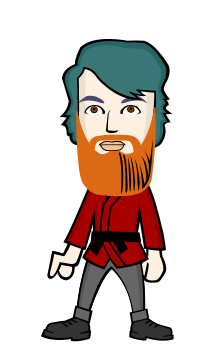Innovations continued through the Middle Ages with innovations such as silk, the horse collar and horseshoes in the first few hundred years after the fall of the Roman Empire. Medieval technology saw the use of simple machines (such as the lever, the screw, and the pulley) being combined to form more complicated tools, such as the wheelbarrow, windmills and clocks. The Renaissance brought forth many of these innovations, including theprinting press (which facilitated the greater communication of knowledge), and technology became increasingly associated with science, beginning a cycle of mutual advancement. The advancements in technology in this era allowed a more steady supply of food, followed by the wider availability of consumer goods.

Starting in the United Kingdom in the 18th century, the Industrial Revolution was a period of great technological discovery, particularly in the areas of agriculture, manufacturing, mining, metallurgy and transport, driven by the discovery of steam power. Technology later took another step with the harnessing of electricity to create such innovations as the electric motor, light bulb and countless others. Scientific advancement and the discovery of new concepts later allowed for powered flight, and advancements in medicine, chemistry, physics and engineering. The rise in technology has led to the construction of skyscrapers and large cities whose inhabitants rely on automobiles or other powered transit for transportation. Communication was also greatly improved with the invention of thetelegraph, telephone, radio and television. The late 19th and early 20th centuries saw a revolution in transportation with the invention of the steam-powered ship, train, airplane, and automobile.
The 20th century brought a host of innovations. In physics, the discovery ofnuclear fission has led to both nuclear weapons and nuclear power.Computers were also invented and later miniaturized utilizing transistors andintegrated circuits. The technology behind got called information technology, and these advancements subsequently led to the creation of the Internet, which ushered in the current Information Age. Humans have also been able to explore space with satellites (later used for telecommunication) and in manned missions going all the way to the moon. In medicine, this era brought innovations such as open-heart surgery and laterstem cell therapy along with new medications and treatments. Complex manufacturing and constructiontechniques and organizations are needed to construct and maintain these new technologies, and entireindustries have arisen to support and develop succeeding generations of increasingly more complex tools. Modern technology increasingly relies on training and education — their designers, builders, maintainers, and users often require sophisticated general and specific training. Moreover, these technologies have become so complex that entire fields have been created to support them, includingengineering, medicine, and computer science, and other fields have been made more complex, such as construction, transportation and architecture.




